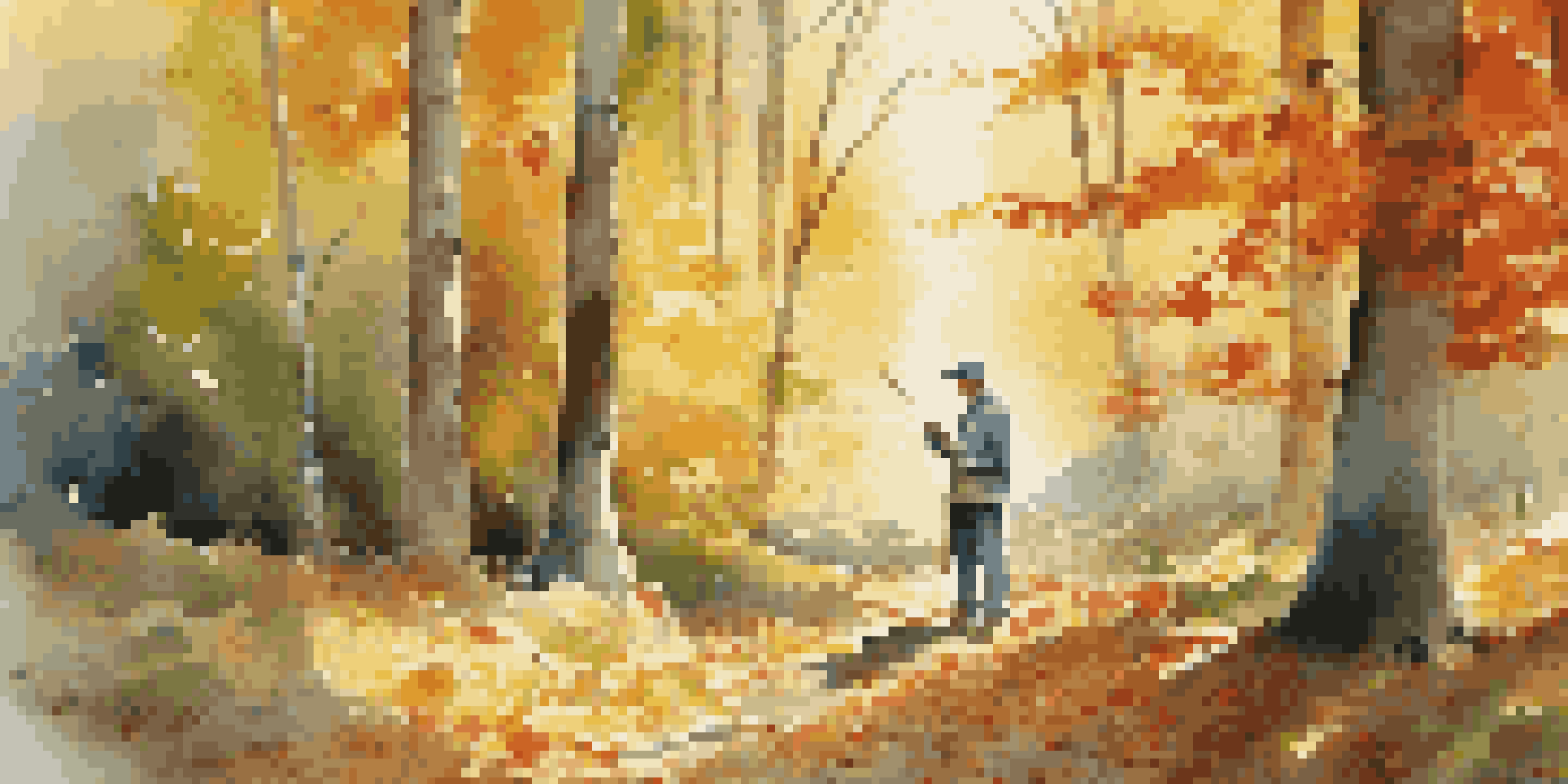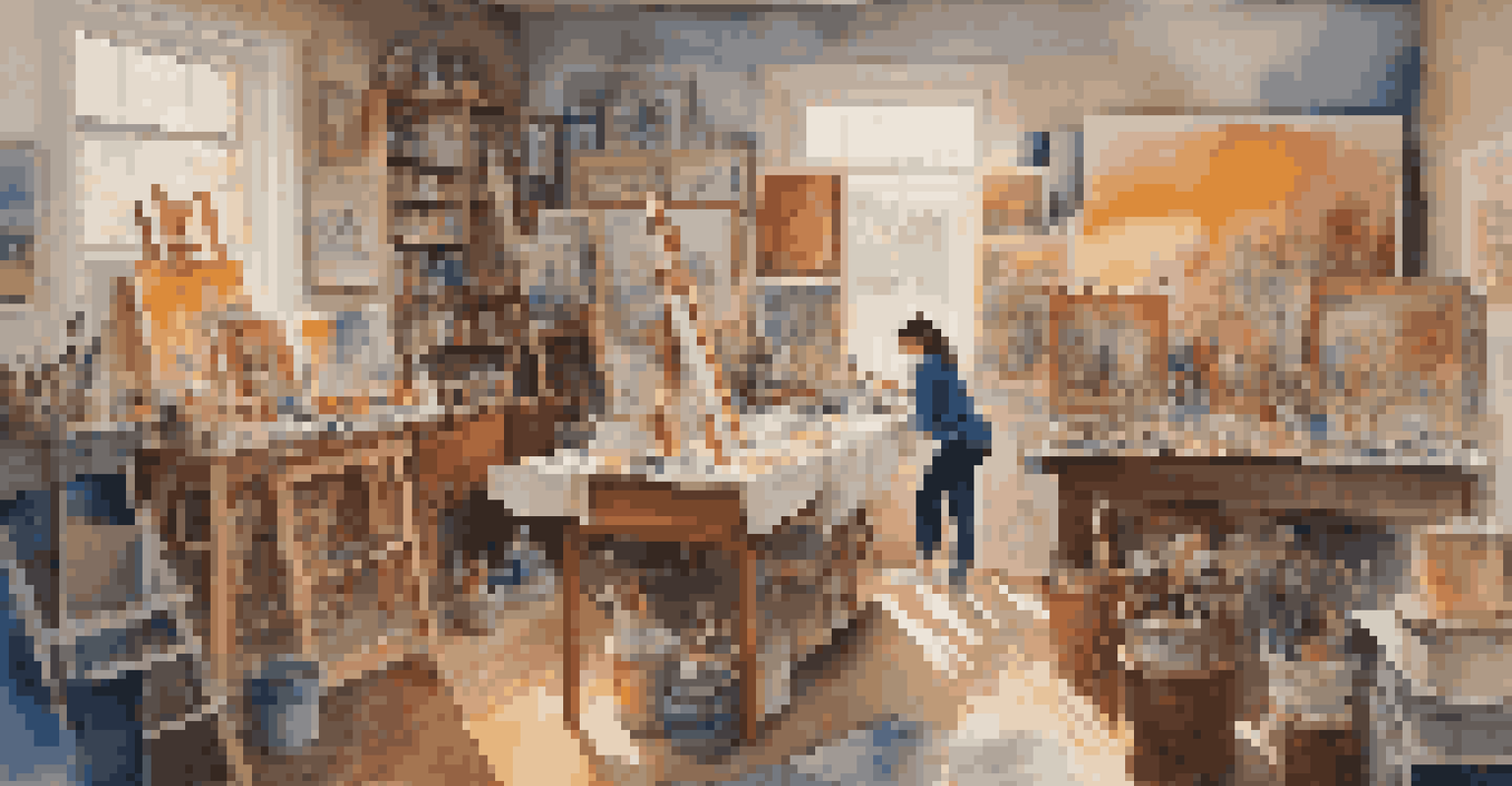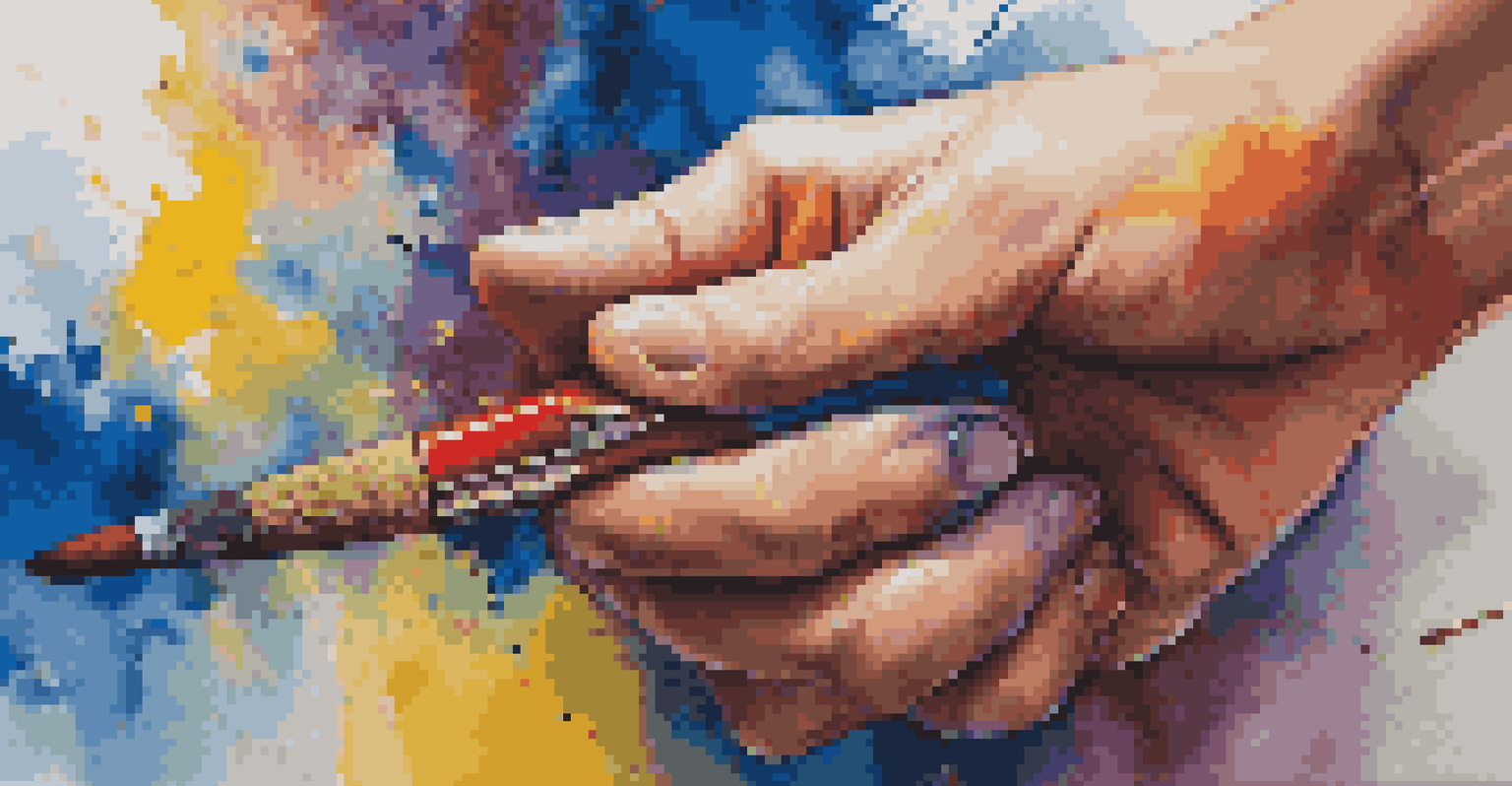Emotional Release Through Art: Understanding the Process

What is Emotional Release Through Art?
Emotional release through art refers to the process of expressing feelings and thoughts creatively. This can be done through various artistic mediums, such as painting, drawing, music, or writing. The beauty of this form of expression lies in its ability to convey emotions that might be difficult to articulate verbally.
Art is not freedom from discipline, but disciplined freedom.
Many people find that engaging with art allows them to channel their emotions into something tangible. For instance, a painter might create a vibrant canvas to depict joy, while a musician might compose a melancholic tune to express sadness. This versatility makes art an invaluable tool for emotional exploration.
Ultimately, emotional release through art is a personal journey. Each individual's experience is unique, as the process reflects their inner world and the emotions they wish to communicate. By embracing this journey, individuals can gain deeper insights into themselves and foster healing.
The Psychological Benefits of Artistic Expression
Artistic expression can significantly impact mental health, offering therapeutic benefits that are well-documented. Engaging in creative activities has been shown to reduce symptoms of anxiety and depression, providing a safe outlet for processing complex emotions. For many, creating art can serve as a form of self-care.

When individuals immerse themselves in art, they often experience what psychologists call 'flow,' a state of complete absorption in the activity at hand. This can lead to a sense of accomplishment and fulfillment, which further enhances emotional well-being. Just think of how someone might feel after finishing a challenging piece of art or a heartfelt song.
Art as an Emotional Outlet
Emotional release through art allows individuals to express complex feelings creatively, offering a tangible means to explore their inner world.
Moreover, art can foster social connections when shared with others. Art therapy groups, for instance, offer a supportive environment where individuals can express their feelings and connect with peers. This sense of community can be incredibly healing and reinforces the idea that no one is alone in their emotional struggles.
How to Get Started with Artistic Expression
Starting your journey of emotional release through art doesn't require any prior experience or talent—just a willingness to explore! Begin by choosing a medium that resonates with you, whether it's painting, writing, or even dancing. The key is to find something that excites your imagination and encourages you to express yourself freely.
The painter tries to master the art of painting, the musician tries to master the art of music, the poet the art of poetry; but the artist, the true artist, tries to master the art of life.
Set aside some time in your schedule dedicated to your art practice. This could be as simple as grabbing some paint and a canvas, writing in a journal, or playing an instrument. The goal here is to create a space where you feel comfortable letting your emotions flow without judgment.
Remember, there are no right or wrong ways to create art. Allow yourself to experiment and embrace imperfections. It's all part of the process, and each stroke or note can lead to profound emotional insights.
Breaking Down Emotional Barriers Through Art
Art can serve as a bridge for those struggling to communicate their feelings. For example, someone dealing with grief might find it hard to talk about their loss, but creating a piece of art can provide a means of expressing that sorrow. This can be incredibly cathartic, allowing for emotional release that might otherwise remain bottled up.
By translating emotions into visual or auditory forms, individuals can confront their feelings in a safe environment. Creating art can help to externalize emotions, making them more manageable and less overwhelming. This process can lead to a greater understanding of one’s emotional state and pave the way to healing.
Therapeutic Benefits of Art
Engaging in artistic expression has been shown to reduce anxiety and depression, serving as a powerful form of self-care and emotional healing.
Consider how many artists have transformed their pain into powerful works that resonate with audiences. This not only validates their experiences but also creates a shared understanding among those who may be feeling similarly, reinforcing the idea that art can be a powerful tool for connection.
The Role of Art Therapy in Emotional Healing
Art therapy is a structured approach that combines artistic expression with therapeutic techniques. Facilitated by a trained professional, art therapy allows individuals to explore their emotions in a supportive setting. This form of therapy can be particularly effective for those who may struggle with traditional talk therapy.
In art therapy, clients are encouraged to create without the pressure of judgment or expectations. This freedom can lead to breakthroughs, as individuals may unearth feelings they didn’t realize were there. For example, a seemingly chaotic painting might represent unresolved anger or frustration, providing a starting point for deeper exploration.
Moreover, art therapy can cater to all ages and backgrounds, making it an accessible option for many. Whether one is a child dealing with trauma or an adult navigating life transitions, art therapy can offer a creative outlet to facilitate healing.
Finding Your Voice Through Creative Outlets
One of the most liberating aspects of art is that it allows you to find your unique voice. Each person's artistic expression is a reflection of their individuality, shaped by their experiences and emotions. Engaging in art encourages you to tap into your inner self and discover what truly resonates within you.
Finding your voice can also mean exploring different styles and mediums until you stumble upon what feels right. Whether it's abstract painting, poetry, or digital art, the journey is just as important as the destination. Allowing yourself to experiment can lead to unexpected discoveries and a deeper understanding of your emotional landscape.
Finding Personal Voice in Art
Art encourages individuals to discover their unique voice, leading to deeper self-understanding and improved emotional communication.
As you become more comfortable in your artistic expression, you'll likely notice a shift in how you relate to your emotions. You may find it easier to articulate your feelings, both through art and in everyday conversations. This newfound voice can empower you to connect with others on a deeper level.
The Lasting Impact of Art on Emotional Well-Being
The impact of emotional release through art can extend far beyond the initial experience. Regularly engaging in creative expression can lead to lasting changes in emotional well-being, promoting resilience and self-awareness. Over time, individuals may find themselves better equipped to handle life's challenges.
Additionally, many people report a sense of fulfillment and joy from their art practice. This can create a positive feedback loop, where the act of creating art fosters happiness, which in turn encourages more artistic exploration. It’s a beautiful cycle of growth and self-discovery.

Ultimately, the journey of emotional release through art is ongoing. As you continue to explore and express your feelings, you'll likely find new layers of understanding within yourself. Embracing this creative journey can lead to a more fulfilling and emotionally rich life.